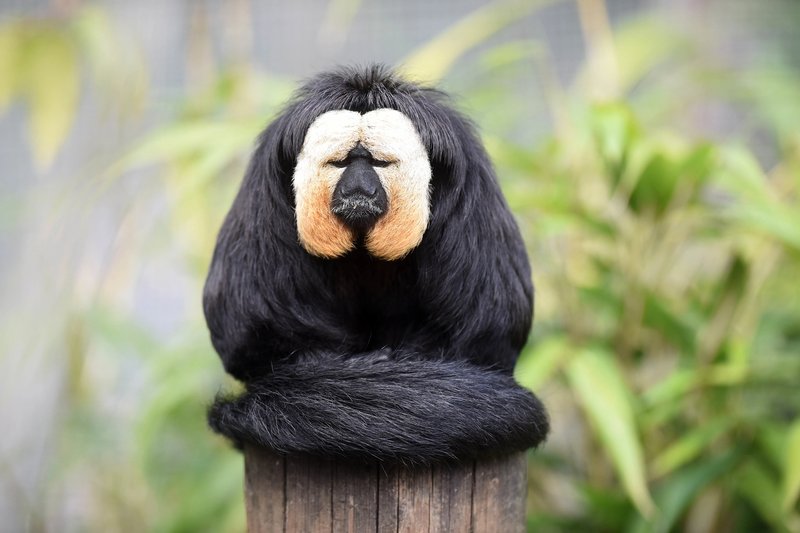
To truly understand the saki monkey and its potential risks to humans, we need to dive deeper. Imagine yourself in a vibrant rainforest, where the saki monkey is king of the canopy. You hear their distinctive calls echoing through the trees, and you can’t help but feel intrigued. But like any curious creature in the wild, the saki monkey has its own ways of interacting with humans—some more benign than others.
Understanding the Saki Monkey
Saki monkeys belong to the Pitheciidae family and are known for their playful and social nature. These monkeys are typically found in the dense, tropical forests of Brazil, Guyana, and Suriname. There are several species of saki monkeys, including the black saki, white-faced saki, and golden saki, each with unique traits.
You might be wondering how these monkeys spend their days. They are primarily arboreal, which means they live in trees. Saki monkeys can leap from branch to branch with ease, often using their long tails for balance. They’re also social creatures, often found in small groups. Observing their playful antics can be quite delightful, yet it’s essential to remember that they are still wild animals.
Behavior and Temperament
When it comes to the saki monkey’s behavior, you can expect a mix of curiosity and caution. While they can be friendly and playful, they also have a strong sense of territory. If they feel threatened, their demeanor can quickly change.
Saki monkeys communicate through a variety of vocalizations and physical gestures. They use these signals to establish social structures within their groups. Honestly, it’s fascinating to see how they interact! However, if they perceive a human as a threat—especially if approached too closely—they may become agitated. They have sharp teeth and aren’t afraid to use them if they feel cornered or scared.
Potential Risks to Humans
So, can saki monkeys pose a danger to humans? The short answer is yes, but the context matters a lot. In most cases, saki monkeys are not aggressive towards humans unless provoked. If you’re observing them in their natural environment from a distance, the risks are minimal.
However, when humans encroach on their territory or try to handle them, that’s when problems can arise. If a saki monkey feels trapped or threatened, it may bite or scratch in self-defense. Such injuries can lead not only to pain but also to potential infections or diseases that wild animals can carry.
Human Encounters with Saki Monkeys
Encounters with saki monkeys can vary widely, depending on the situation. In places where they are accustomed to human presence, like some zoos or reserves, they may seem more approachable and less fearful. You might even catch them being playful, swinging around, and showing off for visitors.
On the flip side, in the wild, saki monkeys are likely to avoid humans. If you do get too close, they may react with loud noises to scare you off. This is their way of warning you, saying, “Hey, back off!” It’s crucial to respect their space and keep a safe distance to ensure a peaceful coexistence.
Safe Practices Around Saki Monkeys
If you’re planning a visit to a place where saki monkeys live, it’s essential to know how to keep both yourself and the monkeys safe. Here are some friendly tips:
- Keep Your Distance: Always observe from afar. Use binoculars for a closer look without intruding on their space.
- Avoid Feeding: Feeding wild monkeys can lead to aggressive behavior and dependence on humans for food.
- Stay Calm: If you encounter a saki monkey, remain calm and avoid sudden movements that might startle them.
- Leave Them Alone: Remember that these are wild animals. It’s best to admire their beauty without trying to touch or interact.
Following these guidelines can help protect both you and the monkeys, ensuring a safer experience in their natural habitat.
In summary, while saki monkeys can be fascinating and entertaining creatures, they’re still wild animals with inherent instincts. They can be dangerous if they feel threatened or cornered, but with proper respect and distance, most interactions with them can be enjoyable and safe. The key lies in understanding their behavior and approaching them with caution.
Next time you find yourself pondering the wild world of saki monkeys, remember: respect their space, appreciate their uniqueness, and most importantly, enjoy the beauty of nature from a respectful distance. The rainforest is their home, and we’re just lucky to get a glimpse into their lively lives!

